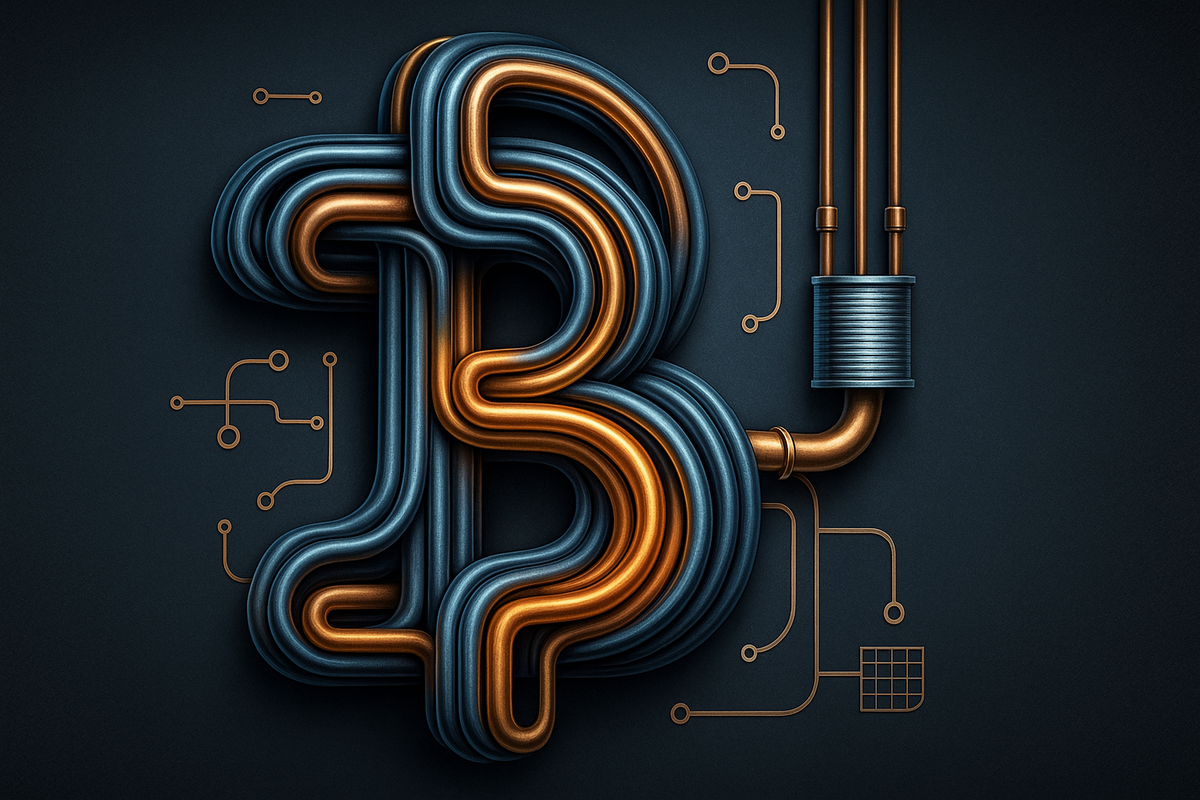Heating Bills to Bitcoin: ASIC-Duct Home Systems
The April 23, 2025 episode of the Canadian Bitcoiners Podcast features Toine detailing how HVAC-integrated ASIC miners replace home fossil-fuel furnaces while stacking Bitcoin.

- My 'briefing notes' summarize the content of podcast episodes; they do not reflect my own views.
- They contain (1) a summary of podcast content, (2) potential information gaps, and (3) some speculative views on wider Bitcoin implications.
- Pay attention to broadcast dates (I often summarize older episodes)
- Some episodes I summarize may be sponsored: don't trust, verify, if the information you are looking for is to be used for decision-making.
Summary
The April 23, 2025 episode of the Canadian Bitcoiners Podcast features Toine detailing how HVAC-integrated ASIC miners replace home fossil-fuel furnaces while stacking Bitcoin. He shows that firmware-driven throttling and Ontario’s ultralow overnight tariff yield 18–24-month paybacks. He also explains safety, grid, and regulatory hurdles to mainstream adoption.
Take-Home Messages
- Heat-for-Profit: Routing miner exhaust into return ducts converts heating expenses directly into sats.
- Tariff Timing: Curtailing five on-peak hours leverages 2.8 ¢/kWh overnight rates and boosts ROI by ~40 %.
- Appliance Control: Firmware links fan speed to room temperature, keeping noise low and comfort stable.
- Safety First: Intake filtration and code-compliant duct work mitigate dust accumulation and fire risk.
- Scale Requires Standards: Clear retrofit codes and modular hardware are critical for widespread household adoption.
Overview
Toine explains how rerouting ASIC exhaust into a forced-air return transforms miners into quiet electric furnaces. Firmware ties fan speed and wattage to ambient temperature, delivering thermostat-like control. Ontario’s CAD 2.8-cent overnight tariff makes the concept immediately profitable.
Hardware economics dominate the second segment. Two down-clocked S19 J Pros heat a 2,000 ft² home for about CA $4,200 installed, with break-even in under two winters. Loki 120-volt kits let renters distribute single hashboards across ordinary outlets.
The discussion then turns to operations. Wi-Fi PDUs cut power when rooms exceed 22 °C, while intake filters keep hashboards pristine and warranty-safe. Ocean Pool Lightning payouts provide daily non-custodial income without minimums.
Regulatory and grid factors close the conversation. Municipal noise bylaws and electrical inspections remain gray areas; utilities may impose caps if unmanaged load grows. Toine calls for standardized retrofit kits and dialogue with local authorities to secure a clear path for mass adoption.
Stakeholder Perspectives
- Homeowners — Seek lower heating costs and passive Bitcoin accumulation.
- HVAC Contractors — Eye new retrofit revenue but need certified guidelines.
- Utilities — Monitor off-peak load spikes and explore demand-response incentives.
- Municipal Regulators — Weigh economic benefits against noise, fire, and zoning concerns.
- Hardware Developers — Pursue open, modular designs to dilute Bitmain’s market share.
Implications and Future Outlook
Linking Bitcoin miners to HVAC systems aligns Bitcoin security with household electrification goals. If utilities formalize demand-response programs, residential fleets could absorb surplus renewables at night and release capacity during daytime peaks. That synergy may defer costly grid upgrades.
Standardized retrofit codes and certified installer pathways would accelerate adoption while satisfying insurers and fire marshals. Open-source hashboards could slash upfront costs and diversify supply chains, hardening Bitcoin’s resilience. Government rebates for efficient electric heating could further tip the scales.
Conversely, restrictive bylaws or blanket mining bans might push innovators offshore, forfeiting local economic and environmental gains. Policymakers, utilities, and industry must coordinate now to craft balanced rules. Successful pilots will set precedents for heat-reuse mining across cold-climate regions.
Some Key Information Gaps
- How can HVAC retrofit kits be standardized to comply with building codes? Clear standards lower liability, hasten installer training, and reassure regulators.
- Which hedging strategies protect homeowners from future electricity-rate spikes? Robust tools preserve ROI and encourage wider participation.
- What aggregate load threshold should utilities tolerate before capping residential mining? Data-driven limits safeguard grid stability while enabling growth.
- How resilient is Ocean Pool’s Lightning-payout workflow to liquidity shocks? Continuous payouts underpin user trust and cash-flow planning.
- What outreach tactics best convey heat-reuse mining benefits to non-Bitcoin homeowners? Effective messaging broadens adoption and magnifies energy-efficiency gains.
Broader Implications for Bitcoin
Electrification Momentum
Replacing propane and heating-oil systems with miner-powered electric heat accelerates residential decarbonization. Night-time demand from throttled ASICs absorbs surplus renewable generation that would otherwise be curtailed. Policymakers could recognize heat-reuse mining as a near-term bridge in net-zero strategies.
Grid Flexibility Economics
Households equipped with demand-responsive miners become micro-balancing assets for utilities. Dynamic rebates could reward these fleets for shedding load during peaks and absorbing it off-peak, deferring costly grid upgrades. Successful pilots would set a replicable model for consumer-owned demand response.
Open Hardware Ecosystem
Community-driven hashboard projects promise modular rigs tailored to diverse thermal loads, diluting Bitmain dependence. A plural hardware supply hardens Bitcoin’s security budget and fosters local manufacturing clusters. Lower entry costs broaden adoption beyond early Bitcoiners.
Resilient Rural Infrastructure
Heat-reuse mining lets remote communities monetize local renewables while securing affordable warmth (sidenote: with electricity from any source, include landfill gas). Steady Bitcoin cashflows can finance micro-grid upkeep and attract investment to underserved regions. This resilience reduces reliance on centralized fuel supply chains.



Comments ()